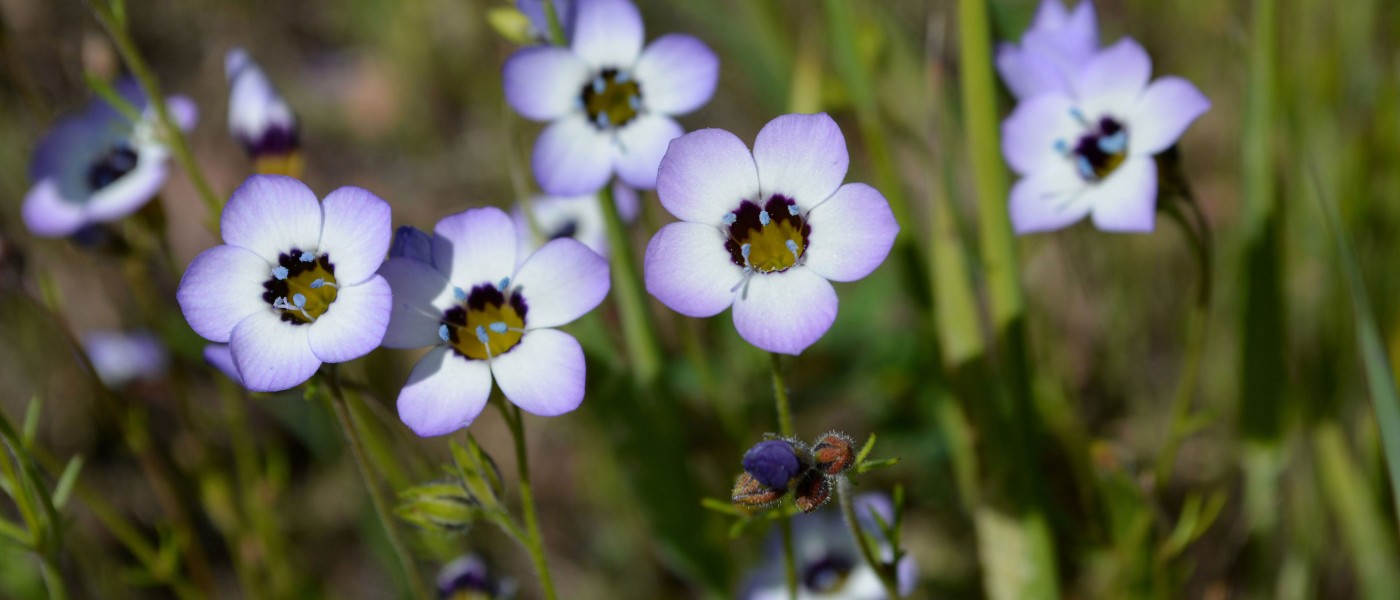Quiz: Can You Guess the Bird-Related Plant Names?
Bird-named plants is the theme for this summer’s container displays on Spencer Terrace, located in the dining area alongside the conservatories and canteen. There you’ll find plants named after a particular bird species, or a bird’s physical characteristics, curated by gardener Mimi Jorling.
Can you guess the common names for these plants?
1. This desert dweller’s flowers are the perfect shape for a certain bird’s beak.
A. Toucan aloe
B. Cardinal yucca
C. Hummingbird yucca
The correct answer is C. Hummingbird yucca (Hesperaloe parviflora). Native to the deserts of northeastern Mexico and southwestern Texas, this perennial succulent is a member of the Asparagaceae, or asparagus family. Hummingbirds probe the plant’s bright, tubular flowers for nectar. The hummingbird yucca also attracts butterflies.
A. Birds’ tails
B. Mexican feathergrass
C. Cockatoo plumes
The correct answer is B. Mexican feathergrass (Nasella tenuissima). This ornamental grass is native to Mexico and the southwest United States. Birds eat the seeds and also use the plant’s hairlike strands for nesting material.
A. Bird’s foot violet
B. Starling pansy
C. Bird’s beak violet
The correct answer is A. Bird’s foot violet (Viola pedata). This herbaceous perennial is native to the pinelands, sandy prairies, and rocky landscapes of northeastern United States. Its palmately lobed leaves resemble birds’ feet, and its flowers are a source of nectar for the regal fritillary butterfly.
A. Creeping bluebird
B. Owl’s ears
C. Bird’s eyes
The correct answer is C. Bird’s eyes (Gilia tricolor). A member of the Polemniaceae, or phlox family, this annual wildflower attracts butterflies and readily self-seeds. Light purple fused petals contrast with the dark purple ring at the top of the flower’s throat, giving the appearance of birds’ eyes.
A. Cranesbill
B. Egret wing
C. Pigeon beak
The correct answer is A. Cranesbill (Geranium sanguineum ‘Azure Blue’). This herbaceous perennial, which spreads through rhizomes, has fragrant foliage that turns red after the first frost in fall. Bright pink-purple flowers mature into seed heads that resemble a crane’s head with a long beak.
A. Goose eggs
B. Hens and chicks
C. Dove nests
The correct answer is B. Hens and chicks (Sempervivum ‘Twilight Blues’). A member of the Crassulaceae, or stonecrop family, this succulent has rosettes of pointy leaves. The original rosette (“hen”) produces miniature offsets that are referred to as “chicks.”
A. Warbler sage
B. Hummingbird mint
C. Oriole mint
The correct answer is B. Hummingbird mint (Agastache ‘Summer Glow’). The tubular, nectar-filled flowers of this herbaceous perennial attract hummingbirds and butterflies.
Thanks for taking the quiz. How many bird-named plants did you guess correctly?
Be sure to check out For the Birds, a multidisciplinary exhibition and program series inspired by the Garden’s resident birds, as well as “For the Birds: The Birdsong Project,” a multialbum set of original recordings celebrating birds by 200-plus artists, compiled by Randall Poster. Join in on birding tours and events and explore our other bird-themed gardens. Find more information at bbg.org/forthebirds.









